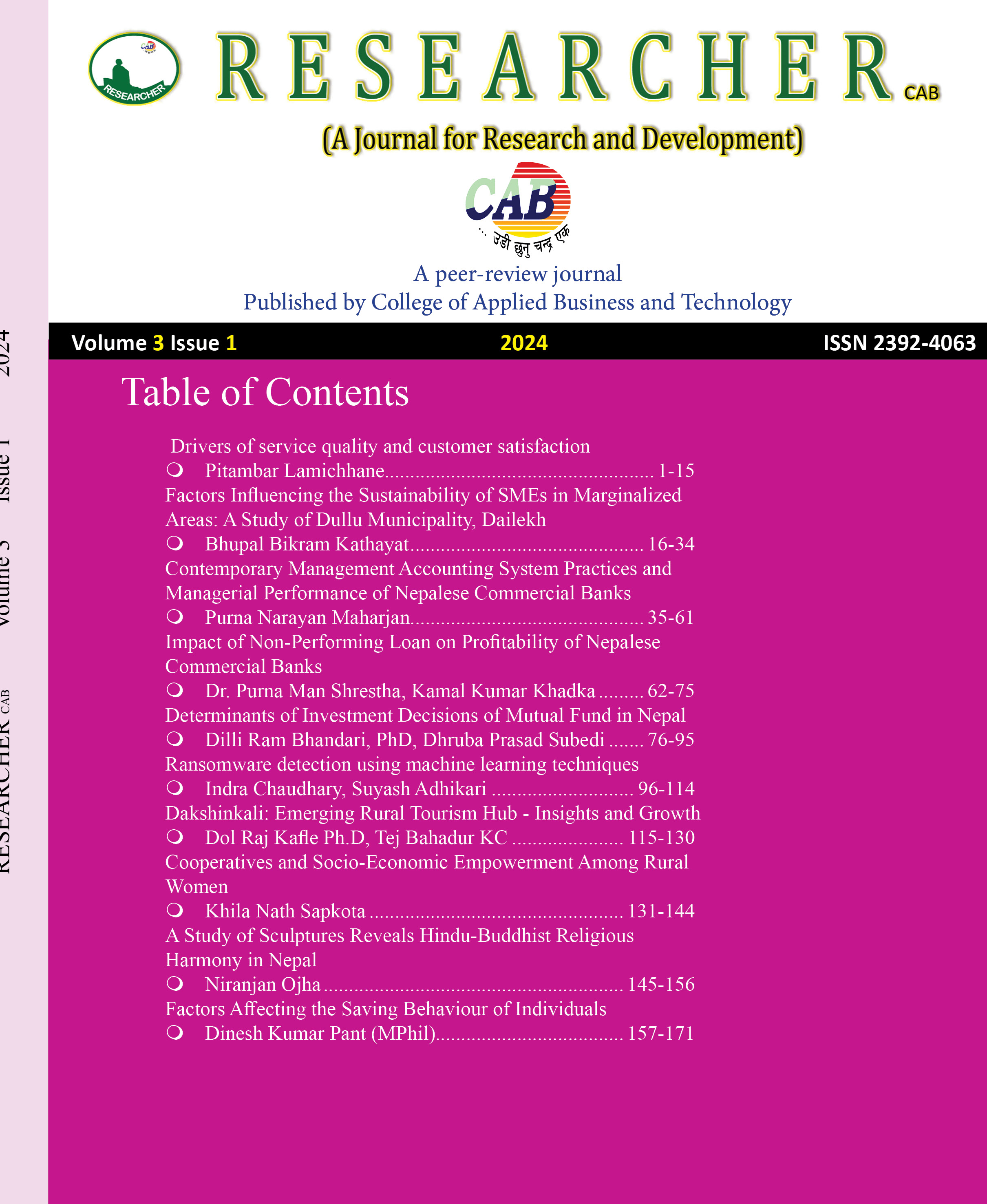A Study of Sculptures Reveals Hindu-Buddhist Religious Harmony in Nepal
DOI:
https://doi.org/10.3126/rcab.v3i1.68428Keywords:
Sculptures, Hindu-Buddhist relations, religious understanding, conflict, acceptanceAbstract
In a multi-religious country like Nepal, religious harmony is essential for sustaining peace and calmness. Religious discord in society may result if religious concord is not addressed. Even though Nepal is a secular country with a Hindu majority, Buddhists remain crucial and inseparable elements of Nepalese society. They have lived in religious harmony in Nepal. During the period, there were no religious riots or tensions between Hindus and Buddhists. According to the Principle of Religious concord, when two cultures meet and interact, religious ideas will be exchanged, with the dominant culture prevailing. Harmony in cultures and customs evolved in Nepal for a variety of reasons. Because of their social acceptance and respect in society, Buddhists have become a vital part of it. Buddhism is seen as a component of Hindu philosophy by Hindus, and vice versa. In recent years, however, they have sought to differentiate themselves by religiously violating decades of peace and harmony. Nepal, a country with diverse religious traditions, has faced occasional tensions between different groups, including Hindu-Muslim, Buddhist-Hindu relations, Christian minorities, indigenous beliefs, and political dimensions. These tensions are often linked to socio-political issues, competition over religious sites, and accusations of proselytization or conversion activities. Recently in Nepalganj, Muslims disturbed Hindus during Deepawali and Hindu disturbed in tajia procession. The purpose of this research is to examine the critical factors that contribute to religious harmony in a multi-faith society, as well as the reflection of religious harmony in Nepali sculptures. An in-depth interview and library research technique are used to investigate the topic of religious harmony. The goal of this article is to examine the underlying factors that lead to religious harmony in a multi-religious community, as well as its reflection in Nepali sculptures. This study also looks at the elements that influence harmony in the setting of Nepali sculptures. As a result, the conversation strives to foster long-term religious harmony between Nepal's Hindu and Buddhist religious communities. The findings may motivate them to keep strong connections.




